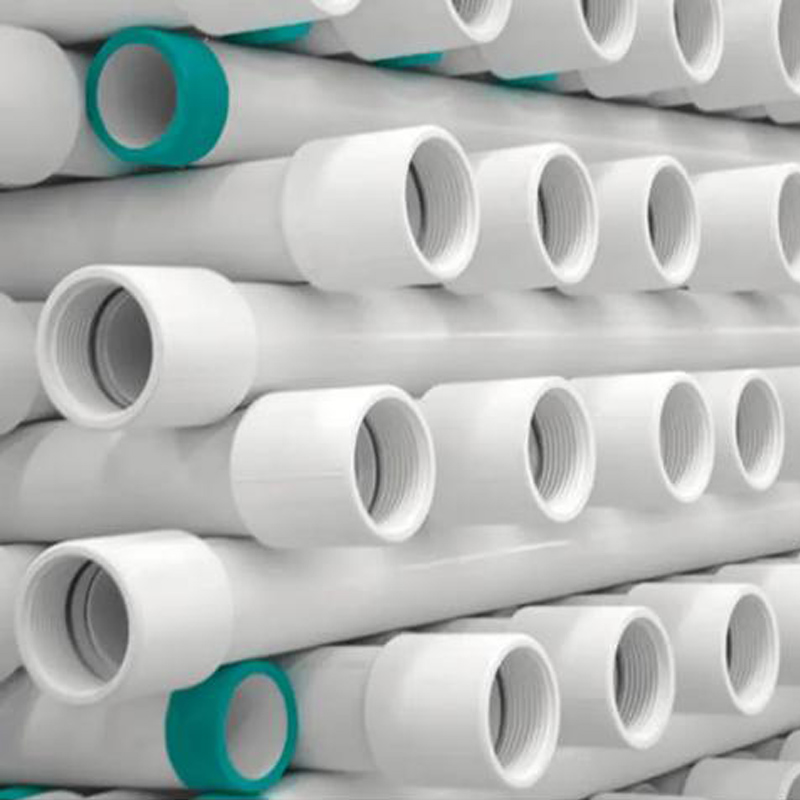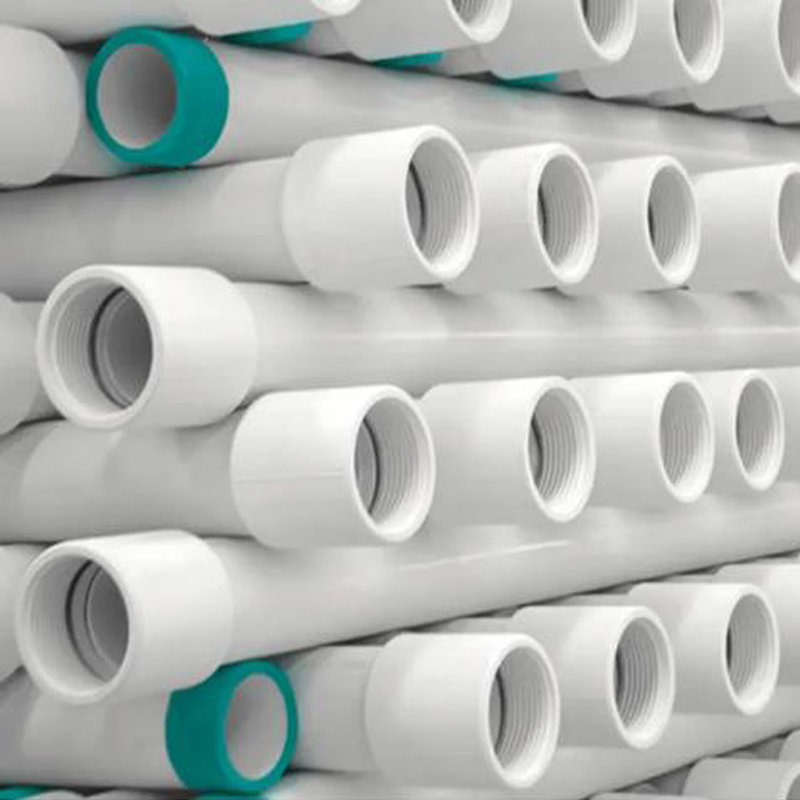Jun . 24, 2025 05:46 Back to list
HDPE Compression Fittings Durable & Reliable PP Compression Fittings Supplier
- Introduction to hdpe compression fittings
and the outlining of compression fittings landscape - Technical features and advancements: How hdpe compression fittings differ from alternatives
- The engineering edge: Data and testing highlights of pp compression fittings
- Comparative analysis: Leading manufacturers and product benchmarks
- Customization capabilities: Tailoring hdpe conduit fittings service to specific project needs
- Real-world installations: Application cases and measured performance
- hdpe compression fittings: Market trends, future directions, and buyer guidance

(hdpe compression fittings)
Introduction: The Role of hdpe compression fittings in Modern Piping Systems
Compression fittings, especially those manufactured from High Density Polyethylene (HDPE), have revolutionized fluid and gas piping systems across diverse sectors, offering superior resistance, flexibility, and reliability. The emergence of hdpe compression fittings aligns with the growing demand for durable, efficient, and eco-friendly pipeline solutions in municipal water delivery, agricultural irrigation, gas distribution, and industrial chemical processing. The integration of advanced polymers has significantly reduced maintenance costs, minimized leakage risks, and enabled rapid on-site installation, outperforming many traditional connector types in both longevity and performance metrics.
HDPE and Polypropylene (PP) compression fittings serve as the backbone of contemporary plastic conduit systems, designed to merge piping sections securely and create leak-proof seals under pressure variances. These fittings establish a secure mechanical grip by compressing a split ring or insert against the pipe wall, forming an effective, long-lasting joint. Industry reports project the global compression fittings market to grow at a CAGR of 5.6%, reflecting their escalating relevance in new infrastructure and the retrofitting of aging networks.
Technical Prowess: Engineering Advantages of Compression Fittings
Hdpe compression fittings exhibit formidable advantages due to their molecular structure, manufacturing processes, and design geometry. The meticulous selection of high-grade materials ensures chemical stability, high impact resistance, and unparalleled elasticity, which withstand cyclic loading and temperature fluctuations.
These fittings frequently surpass conventional metal or PVC connectors in flexibility and resilience. For instance, they retain tensile and compressive strengths exceeding 20 MPa and demonstrate stress crack resistance beyond 1000 hours (ASTM D1693). Additionally, PP compression fittings present similar advantages, especially regarding chemical inertness and UV stability, which are critical in exposed or aggressive environments.
The consistent use of fusion-free assembly keeps labor costs lower and dramatically shortens project turnaround. Pioneering design innovations—such as integral thrust rings and anti-leak double O-Ring seals—strengthen security and reliability in extreme service conditions.
Quantitative Insights: Compression Fittings Performance Data
To understand the technical merit of various fitting types, consider the following comparative data based on industry-standard testing. The table below illustrates performance benchmarks for common fittings:
| Property | HDPE Compression Fittings | PP Compression Fittings | Traditional Metal Fittings |
|---|---|---|---|
| Working Pressure Range | Up to 16 bar (232 psi) | Up to 10 bar (145 psi) | Up to 25 bar (362 psi) |
| Temperature Range | -10°C to 80°C | -5°C to 90°C | -20°C to 120°C |
| Service Life Expectancy | > 50 years | > 30 years | 20–40 years |
| Chemical Resistance | Excellent (most chemicals and acids) | Excellent (alkalis, salts, acids) | Variable (depends on alloy) |
| UV Stability | High (with carbon black) | High | Varies |
| Installation Time (per joint) | 3–5 mins | 3–5 mins | 10–20 mins |
| Corrosion Resistance | 100% | 100% | 50–90% |
The quantitative superiority of hdpe and pp fittings is apparent when considering not only pressure resilience and lifespan but also the efficiency with which they support fast installation and low cost of ownership.
Benchmark Comparison: Manufacturers of Compression Fittings
The market for compression fittings is populated by several reputable brands, each offering unique strengths regarding engineering, warranty, and global reach. Here is a comparative overview of leading international manufacturers:
| Manufacturer | Origin Country | Main Product Focus | Certifications | Warranty | HDPE Fitting Range |
|---|---|---|---|---|---|
| Georg Fischer | Switzerland | Piping systems, HDPE/PP fittings | ISO 9001, WRAS, DVGW | 10 Years | Complete range up to 125mm |
| Aliaxis | Belgium | PP/HDPE pipes and fittings | ISO 14001, NSF, WRAS | 5–10 Years | 16mm–110mm standard stock |
| Plasson | Israel | Compression & electrofusion fittings | ISO 9129, ISO 14236 | 10 Years | Up to 160mm |
| UniD | Italy | HDPE/PP Compression Fittings | EN 12201, CE | 7 Years | Complete selection, custom orders available |
Selecting a supplier involves not just brand reputation but also compliance with local and international certifications, project-specific warranty coverage, and the breadth of fitting sizes and customization support.
Project-Specific Customization: hdpe conduit fittings service
Many projects demand fit-for-purpose solutions that standard fittings cannot fully address. Leading manufacturers now offer comprehensive hdpe conduit fittings service portfolios that include:
- Custom diameter and pressure-class design
- Specialized sealing materials for aggressive media
- Color-coding for utility separation (e.g., water/gas/chemical)
- Integration with smart monitoring or RFID modules
- Bespoke lengths or pre-assembled configurations to accelerate jobsite work
For example, a European utility retrofit required over 40 variants of twin-wall HDPE fittings, integrating both pressure and data conduits, all delivered pre-labeled to streamline field assembly. Time and cost savings frequently exceed 20% on complex jobs, providing measurable ROI even for custom solutions.
Application Cases: Performance in Diverse Environments
Compression fittings have distinguished themselves in a wide spectrum of use-cases, underscoring their real-world performance and versatility.
- Municipal Water Networks: In the city of Malaga, a 25km potable water renewal project deployed over 18,000 hdpe compression fittings from multiple suppliers. Post-commissioning audits found leakage rates plummeted by 97% compared to legacy ductile iron joints, with zero reported failures in three years.
- Agricultural Irrigation: In northern Mexico, modular pp compression fittings with UV stabilizers enabled quick seasonal redeployment, reducing annual maintenance hours by 55% and extending operational cycles despite extreme solar exposure.
- Industrial Acid Handling: A German chemical processing facility replaced corrosion-prone metal connectors with high-grade HDPE compression fittings, eliminating regular replacement needs and saving over €60,000 per annum in direct maintenance costs.
- Telecom Conduit: HDPE conduit fittings service for fiber-optic backhaul—engineered with integrated pull-wires and color-differentiated inserts—boosted installation rates by 35% and eliminated post-installation conduit misrouting incidents in a major North American city.
hdpe compression fittings: Market Trends, Innovations and Buyer Recommendations
The global emphasis on sustainable infrastructure, rising urbanization rates, and stricter regulatory requirements are key drivers for the proliferation of modern hdpe compression fittings. Recent advances in material science—including nano-reinforced PE matrices for even greater stress resistance, and push-fit mechanical features for near-instant assembly—are setting new industry standards.
Buyers evaluating compression fittings should prioritize proven field-testing records, manufacturer certifications such as ISO, project-tailored customization, and after-sales technical support. As service environments become more challenging, the ability to source integrated hdpe conduit fittings service will offer a significant competitive advantage. Long-term market forecasts indicate that by 2030, over 40% of new small-bore piping systems worldwide will be built using advanced compression joints.
In summary, careful supplier vetting, paired with the strategic selection of targeted product features, will ensure optimal lifecycle performance and sustainability in any piping infrastructure.

(hdpe compression fittings)
FAQS on hdpe compression fittings
Q: What are HDPE compression fittings used for?
A: HDPE compression fittings are used to connect HDPE (High-Density Polyethylene) pipes in water supply, irrigation, and industrial applications. They ensure leak-proof and durable joints. These fittings are easy to install and require no specialist tools.Q: How do PP compression fittings differ from HDPE compression fittings?
A: PP compression fittings are made from polypropylene, while HDPE compression fittings are made from high-density polyethylene. Both provide secure pipe connections, but their material properties may suit different environments. Selection depends on chemical resistance and application requirements.Q: Are HDPE conduit fittings suitable for electrical installations?
A: Yes, HDPE conduit fittings are widely used for electrical conduit systems to protect wiring. They offer excellent insulation and resistance to chemicals and moisture. Their durability ensures long-lasting protection for cables.Q: What services can I expect from an HDPE conduit fittings service provider?
A: An HDPE conduit fittings service typically includes supply, customization, installation, and technical support for conduit systems. Providers may also offer advice on product selection and system design. Professional installation ensures optimal performance and safety.Q: Can HDPE and PP compression fittings be reused?
A: Generally, HDPE and PP compression fittings can be reused if undamaged and properly inspected. Reusing helps reduce costs but always check for wear or deformation. Proper installation is crucial to maintain leak-proof connections.-
Flexible DN50 HDPE Pipes in Coils: Durable & Easy Install
NewsAug.08,2025
-
DN100 PVC Pipes for Well Casings | Durable & Corrosion-Proof
NewsAug.07,2025
-
Durable DN500 HDPE Double Wall Corrugated Drain Pipes
NewsAug.06,2025
-
32mm HDPE Pipes Coil: Durable & Flexible Water Supply
NewsAug.05,2025
-
DN100 PVC Well Casing Pipes | Durable Corrosion-Proof
NewsAug.04,2025
-
HORON 25mm PPR Plumbing Pipes - AI-Enhanced & Reliable
NewsAug.03,2025

